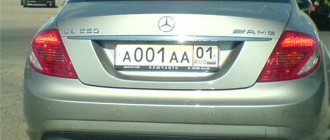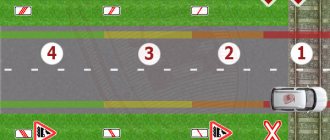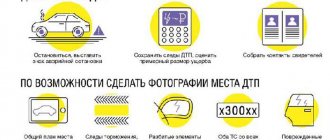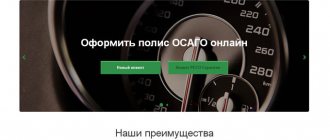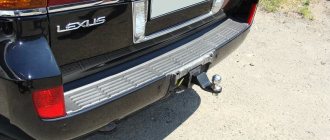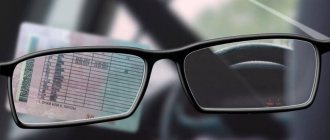HomeCustoms clearanceCars from Lithuania
The Lithuanian automobile market is one of the largest markets in Europe, represented by the sale of both new and used (used) cars and spare parts for them! On it you can find cars imported from the American market (USA), Asian market (South Korea, in rare cases China), and of course from European countries: Germany, Spain, Italy, France, Poland, Switzerland, Holland and many others . Lithuania is no less famous for the dismantling of spare parts cars imported from the UK, Japan and the USA, where used cars, including damaged ones, are cheap.
Brands of cars presented on the Lithuanian market:
AC, Acura, Alpina, Aston Martin, Audi, Bentley, BMW, Buick, Cadillac, Chevrolet, Chrysler, Citroen, Fiat, Ford, Genesis, Honda, HTM, Hyundai, Infiniti, Isuzu, Iveco, Jaguar, Jeep, KIA, Land Rover, Lexus, Mazda, Mercedes-Benz, Mitsubishi, Nissan, Opel, Peugeot, Porsche, Ravon, Renault, Skoda, Smart, Subaru, Suzuki, Toyota, Venturi, Volkswagen, Volvo, VW and many others.
Both new and used cars are in demand. If the age of the car does not exceed three years, it is considered to be new. Among new cars, the leader in sales is the Fiat brand, especially the Fiat 500, Fiat Doblo models, followed by Toyota, Jeep; Volkswagen, Dacia, Skoda. The leading brands in the premium segment are BMW, Audi and Mercedes. Both new and used cars are brought from Lithuania to Russia; most often they buy cars whose age ranges from 3 to 5 years, since this category of car age is optimal for customs clearance. In Lithuania, you can buy a car at specialized car markets in Siauliai, Kaunas, Klaipeda and the largest in the city of Vilnius. Another popular way is to find the desired model on the Internet and contact the seller to discuss the terms of purchase. Car delivery from Lithuania is somewhat easier than from European countries; Lithuania is located much closer to Russia and has common borders with the Kaliningrad region and Belarus. These are important points to consider if you plan to buy an inexpensive car. Despite fluctuations in the ruble exchange rate, car prices in Lithuania are lower than in Russia. A car wears out significantly less on European roads, which allows you to be confident in its quality.
Not only cars, but also auto parts are imported from Lithuania to Russia. Spare parts include all elements of cars, which, as a rule, have individual serial numbers:
- gearboxes (automatic or manual transmission);
- diesel and gasoline internal combustion engines;
- bodies and their elements;
- chassis and cabins;
- elements of car interiors;
- suspension elements;
- brake elements;
- and many other auto spare parts.
Customs clearance of spare parts for a car can be done at regular (non-excise) customs.
Vintage cars over 30 years old, which are of cultural and historical value, are imported from Lithuania to Russia. The technical condition of such vehicles must meet special requirements. Customs clearance of vintage cars should be carried out at customs posts specifically designed for cultural property, and not at posts for vehicles. PTS is not issued for such cars! Vintage cars are not intended to be driven on public roads; they should be treated like museum pieces.
Car buyers must select a car, purchase it and deliver it to Russia. At the same time, it must be cleared through customs, receive a PTS and register with the traffic police.
Important! Cars whose environmental class is lower than Euro-4 cannot be imported into Russia! With the exception of cultural values!
Methods for importing cars to Russia from Lithuania:
- At your own pace, you can either personally drive or be an accompanying person. Often used by individuals. This method is considered the most accessible and cheapest;
- By a motor carrier on a car carrier or in the back of a truck;
- By sea in a container from the port of Lithuania to the ports of Russia: St. Petersburg, Novorossiysk, Vladivostok. The method is not fast and not always cost-effective;
- Air delivery. The method is fast, but expensive;
- By rail, in a carriage or on a platform, this method is not the most popular.
The delivery method is selected individually, taking into account: the buyer’s wishes, the cost of the car, and the risk associated with delivery.
Cars imported from Lithuania to Russia must be cleared through customs. Passing customs clearance is a mandatory stage of importing a car, after which you can obtain license plates (numbers). Customs clearance of a car is carried out at customs posts specially designed for this purpose. To ensure that customs clearance is not long and does not require unnecessary costs, you need to know customs rules well. If you do not have the necessary knowledge and experience or you feel unsure, then it is better to contact our specialists who will help you complete customs clearance without delay!
Do you need to clear your car through customs? – We will help you!
Where can you buy a used car at a profit?
You can buy a used car in the Baltic countries much cheaper compared to the European part of Russia. Lithuania, Latvia and Estonia are members of the European Union, and local enterprising dealers bring cars here from all over Europe. Lithuania is very popular among Russians who want to buy a used car from the Baltics.
The secondary market for used cars in Lithuania keeps prices at the lowest level in the entire Baltics.
Here you can find models much cheaper than in the countries from which they were brought. The fact is that Lithuanian entrepreneurs have been importing cars from Europe for a long time and have managed to establish profitable supply channels. They purchase cars for resale wholesale in EU countries. European sellers give a good discount for this.
All purchased goods are delivered by auto transporters to Lithuania, where buyers from Russia and other neighboring countries are already waiting for them. It is not profitable to go to Western Europe to pick up cars on your own due to significant additional costs. Lithuanian resellers are ready to offer their goods even cheaper than, for example, in Germany. They make a markup of 15-30%. Models in high demand are sold at a maximum markup, and those that are not popular can be purchased at a wholesale price or even lower. European sellers, when selling used cars at a significant discount, demand that unpopular models also be included in the main batch.
How to buy at the Lithuanian car market
There are four large car dealerships in Lithuania:
| Name: | Car market "Garyunay" |
| Address: | Vilnius, st. Garyunu, 49 |
| Help phone number: | 8526410 94, 852641077, 852641028 |
| Opening days and hours: | Wednesday-Saturday: from 06.00 to 14.00 |
| Name: | Kaunas car market |
| Address: | Kaunas, Taikos Ave. 135 B |
| Help phone number: | 8 37 353876, 8 687 72726 |
| Opening days and hours: | Monday-Friday, Sunday: from 8.00 to 18.00 Saturday: from 06.00 to 18.00 |
| Name: | Utena car market |
| Address: | Utena, st. Aukstaiciu 10 |
| Help phone number: | 8 389 75198, 8 687 26421 |
| Opening days and hours: | Monday-Saturday: from 6.00 to 19.00 Sunday: from 07.00 to 17.00 |
| Name: | Marijampole car market |
| Address: | Marijampole, st. Gamiklu, 9 |
| Help phone number: | 8 343 97246, 8 676 43863 |
| Opening days and hours: | Monday-Tuesday: from 6.00 to 14.00 |
More on AutoLex.Net:
What summer tires should I buy?
They are all outdoors, but work according to a specific schedule. You need to go there when the market is open and choose the right car. Its windshield usually bears the price, mileage, owner's contact information, and a phone number. By calling it, you can arrange a meeting and discuss other important details.
Typically, sellers require a deposit of 100-200 euros, after which they deregister the car. They also help check vehicles at service stations; there are police stations near the markets where they check the car for legal purity. Further:
- a purchase and sale agreement is concluded with a notary and a customs declaration is drawn up;
- buy car insurance;
- register the vehicle in the state institution “Regitra” (like the Russian traffic police) to obtain a Lithuanian vehicle title and transit numbers.
Car market in Lithuania
Legal ways to import cars from the Baltics to Russia
Our compatriots are not just thinking about how to bring a car into Russia without customs clearance. Customs clearance according to all the rules is a serious procedure for those who want to buy a vehicle abroad, but operate it in Russia. Registration of documents at the customs point and payment of duties requires time and serious expenses. The final amount depends on several factors:
- cost of the vehicle;
- types of vehicles - passenger car, truck, bus, etc.;
- year of manufacture of the car;
- engine characteristics - volume, power;
- availability of a trailer;
- import duties and value added tax in the amount of 18% of the price of the car.
If a car is imported into the country legally without customs clearance, its owner has the opportunity to save money and time. On the one hand, he becomes the owner of a high-quality vehicle, but on the other hand, a lot of restrictions arise:
- a vehicle that has not cleared customs may remain in Russia for a certain period of time;
- Only the person who has issued temporary import can drive the vehicle;
- the car cannot be sold, given away or transferred by proxy;
- It is not allowed to use the machine for commercial purposes;
- You cannot cross the border with other neighboring countries.
Operation of a vehicle in Russia without customs clearance is carried out only under the conditions of temporary import, but not everyone can take advantage of this opportunity. This right is granted:
- citizens of foreign states temporarily staying or residing in the territory of the Russian Federation;
- Russians living in another country.
Temporary import of a car by a foreign citizen
A foreigner can temporarily import a car registered abroad into Russia without paying customs duties and fees. Registration is carried out at the customs point during border crossing. The imported vehicle must comply with the environmental standard EURO-4 and higher, and it must not have more than 12 seats, including the driver’s seat. It can only be used for personal purposes. The maximum period of stay in the Russian Federation is one year.
Temporary import of a car by a Russian citizen
To bring a car from another country under temporary import conditions, a Russian citizen must meet the following requirements:
- availability of a residence permit in the EU;
- having a passport of a citizen of one of the European countries (dual citizenship).
The maximum period for temporary import of vehicles for Russian citizens is only six months.
Thus, for a Russian, the only opportunity to take advantage of such a legal scheme is to obtain a residence permit in the European Union or obtain citizenship. Going through this procedure only for the purpose of buying a used car in the Baltics is unwise.
To obtain a residence permit, you need to pay about 4,000 euros and another monthly tax of 300 euros, and also meet a number of mandatory conditions - to have real estate in a foreign country and spend a certain time there during the year. If we are not talking about expensive car models, customs clearance will be much cheaper than the cost of official residence in a foreign country.
Types of duties when registering cargo
Payment of duties is one of the stages of customs clearance. There are several types of this payment:
- In accordance with the object of imposition of duties - export, import, transit.
- Depending on the payer - the declarant or persons who are responsible for paying taxes and duties (defined in the foreign trade agreement).
- Depending on the method of calculation - ad valorem, specific, combined.
- Depending on the area of distribution - autonomous or conventional.
Gray schemes for importing cars into Russia
At the beginning of 2009, customs duties on the import of used cars older than 5 years were significantly increased. The government took these measures to block the path of foreign auto junk. As a result, importing old cars with an engine capacity of more than 2 liters became economically unprofitable. However, resellers did not change their field of activity and began to look for loopholes in the law.
Scheme "Constructor"
Customs duties were raised only on complete vehicles, while import duties on spare parts were kept at a lower level. Savvy citizens began to disassemble cars into individual units and parts before crossing the border, and then registered them as the import of spare parts. Subsequently, the vehicle is assembled like a construction kit.
Scheme "Cut"
After the introduction of a customs duty for the import of car bodies of at least 5,000 euros per unit, a new gray scheme appeared - “Cut”. It is not difficult to guess what is meant by this term. The body is cut into two parts - front and rear. They are also designed as spare parts, then they are carefully welded and the previously disassembled parts are installed. It’s dangerous to drive such a car, but resellers don’t care much about that.
The second life of “gray” cars
If a vehicle entered the territory of the Russian Federation in the form of spare parts, it cannot be legally cleared through customs as a complete vehicle. You cannot get a PTS for it, you cannot register it with the traffic police. But our fellow citizens found a solution to the problem here too. They change the body numbers - and the “gray” vehicle is used instead of another, similar legal car, which was previously crashed or fell into disrepair for other reasons.
Using a non-customs cleared car in Russia
As you already know, if a car is not cleared through customs, it can move on Russian roads, but for a limited time. For further use of the vehicle, it is necessary to obtain an extension of temporary importation from the customs authorities. You can also go abroad again, return after a while and go through the whole procedure again. Read more about all the nuances of operating cars with foreign license plates in the article “How to drive a car that has not cleared customs.”
Punishment for violation of customs legislation
Punishments for violation of customs legislation are set out in Chapter 16 of the Code of Administrative Offenses of the Russian Federation and Article 194 of the Criminal Code of the Russian Federation. Administrative liability occurs in the following cases:
- Violation of deadlines for filing a declaration for an imported vehicle – 1000-2000 rubles;
- late payment of fees and charges – 500-2500 rubles;
- untimely return export of a car that came to Russia for temporary import - 1500-2500 rubles.
Criminal liability arises for failure to pay fees and charges in the amount of more than 1 million rubles. When it comes to premium-segment models, payment amounts can easily exceed this threshold. The Criminal Code of the Russian Federation in this case provides the following penalties:
- failure to pay a duty of more than 1 million rubles. punishable by a fine of 100 to 500 thousand rubles, forced labor - up to 480 hours, or imprisonment for up to 2 years;
- failure to pay a fee of more than 3 million rubles is punishable by a fine of 300 to 500 thousand rubles, forced labor for up to 5 years or imprisonment for the same period.
Prices for customs clearance WTS-Group
Each service has its own specifics and can be provided in the form of several separate services. During customs clearance, it may be necessary to provide additional documents and carry out additional work - in each individual case, the cost of services is determined by the volume of work performed.
| Service | Price |
| Cost of basic customs representative services | from 15,000-25,000 rub.* |
| Making an additional list | 3000 rub. |
| *The price depends on the place of registration and the cost of temporary storage for 1 diesel container. |
conclusions
Whether to carry out complete customs clearance of your foreign “iron horse” or arrange temporary import is something everyone decides on their own. When it comes to a small car no older than 5 years old from Lithuania, Latvia or Estonia, it is better to immediately register it in accordance with all the rules and register it with the traffic police. Registration of temporary import makes sense only if you intend to import an expensive model and are ready to comply with all restrictions on its use. With foreign license plates, you will still need to get used to the close attention of traffic police inspectors. Only risk lovers can decide to bypass customs clearance using gray schemes.
What documents are needed for customs clearance?
When registering imported goods, the following documents are prepared for customs:
- Foreign trade contract (agreement) with the sender (seller, manufacturer), plus additions to it.
- Product and transport documentation.
- A document confirming the declared code for the product.
- Payment orders (currency, ruble).
- Transaction passport and confirmation of the customs value of the cargo.
- Licenses, certificates, certificates (documents to confirm compliance with existing prohibitions or restrictions).
- A package of documents from the recipient.
- Power of attorney for the recipient's representative.
- Sender's invoices or prices.
- If available, certificates of the ST-1 form.

